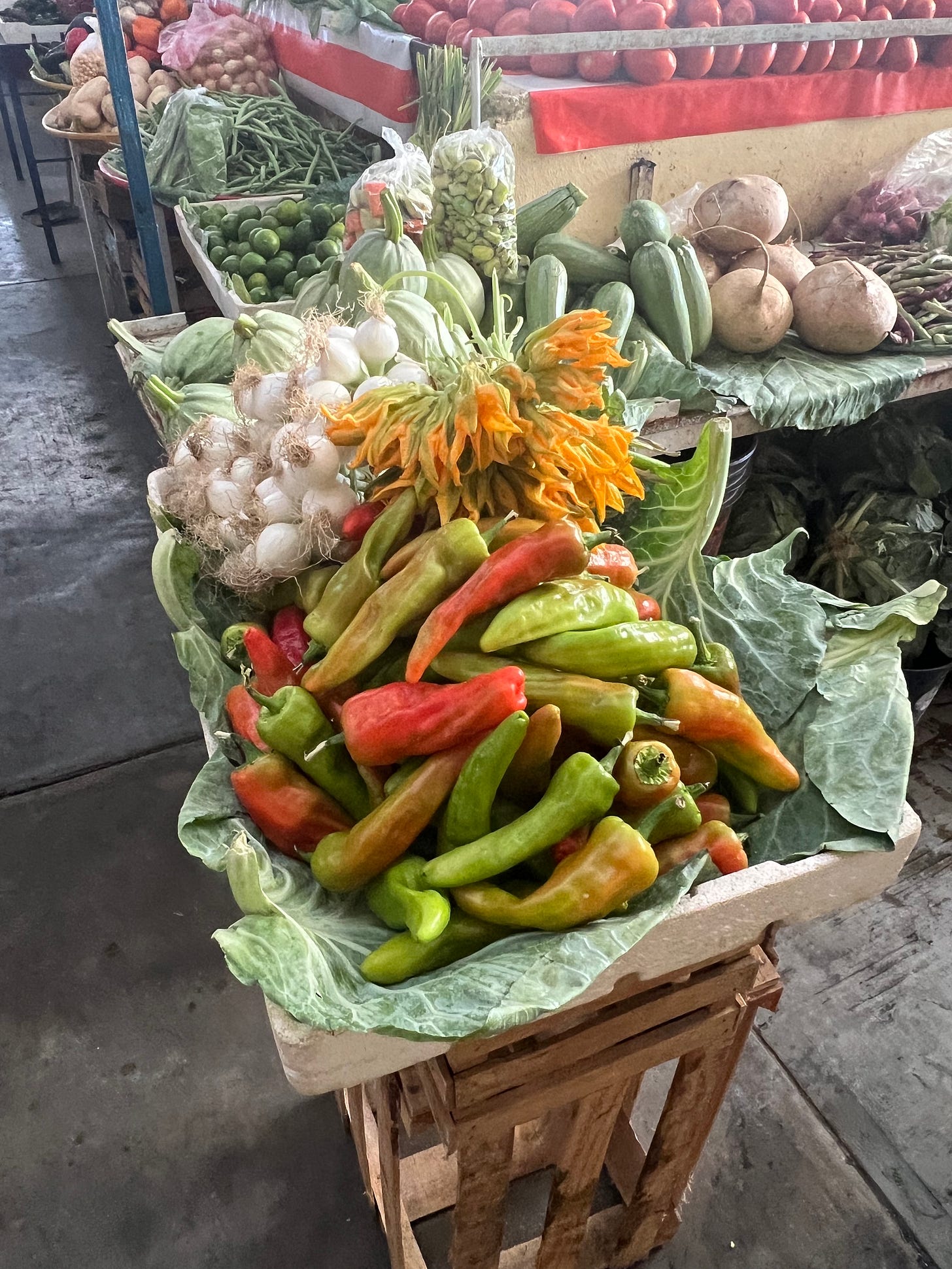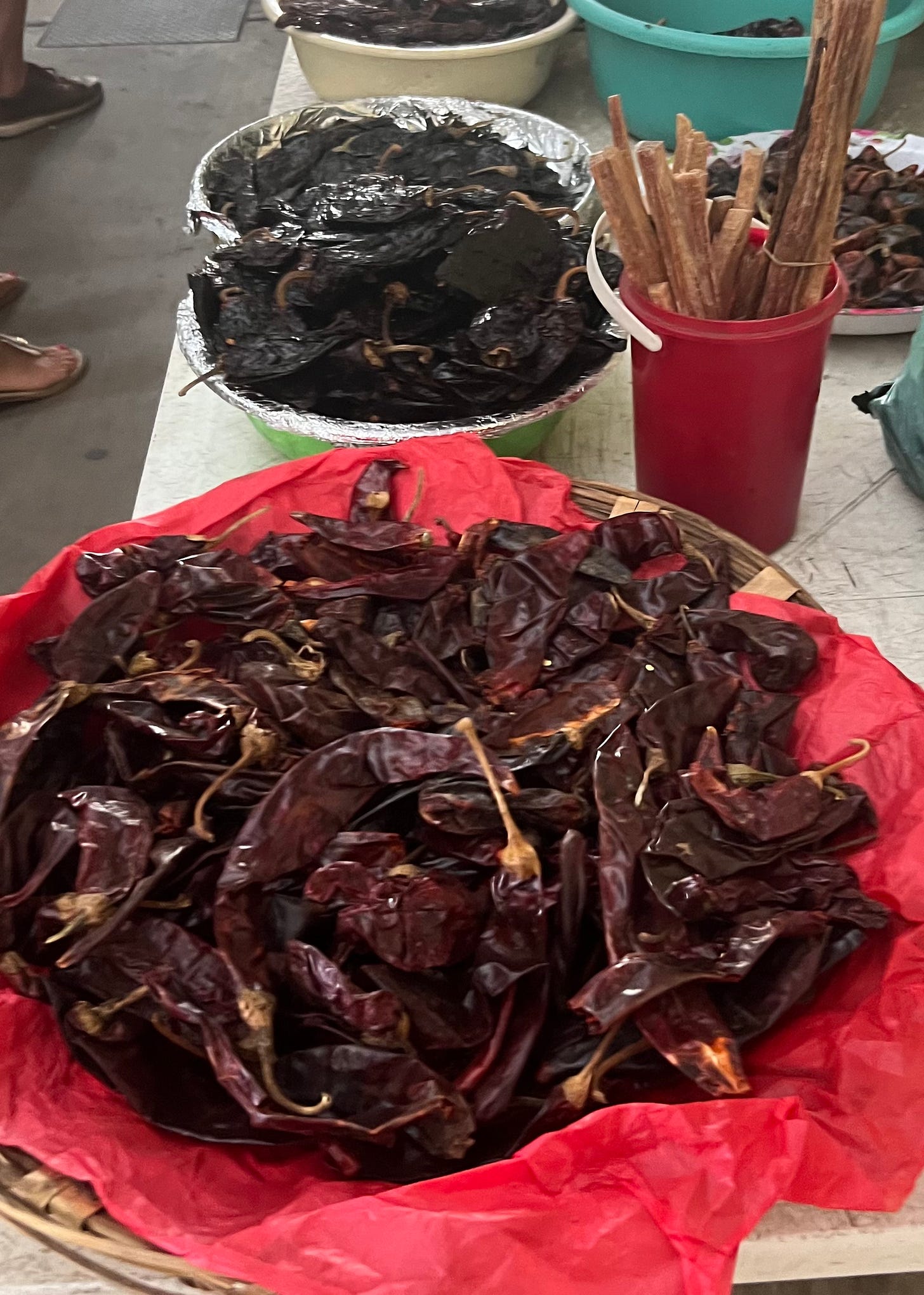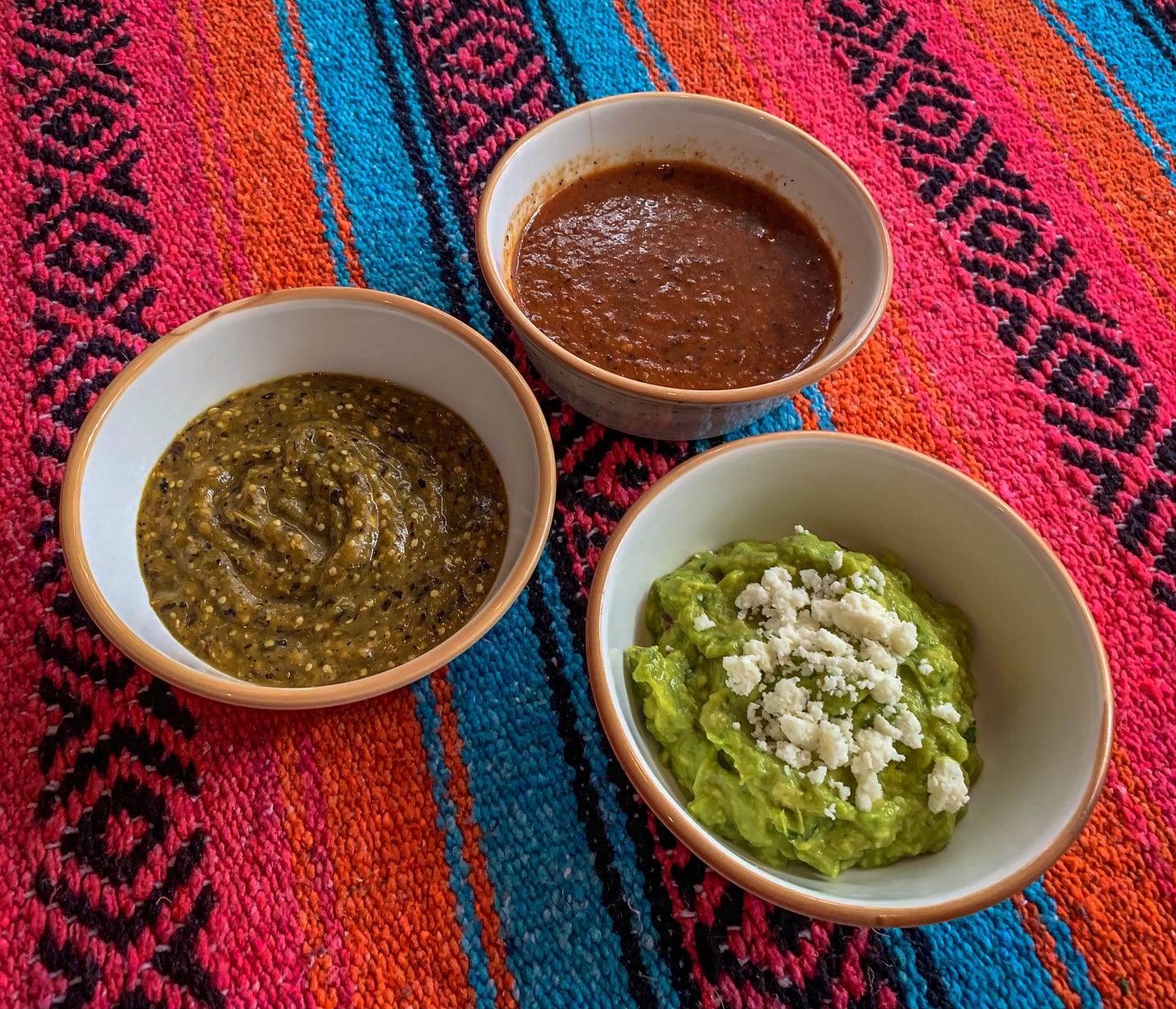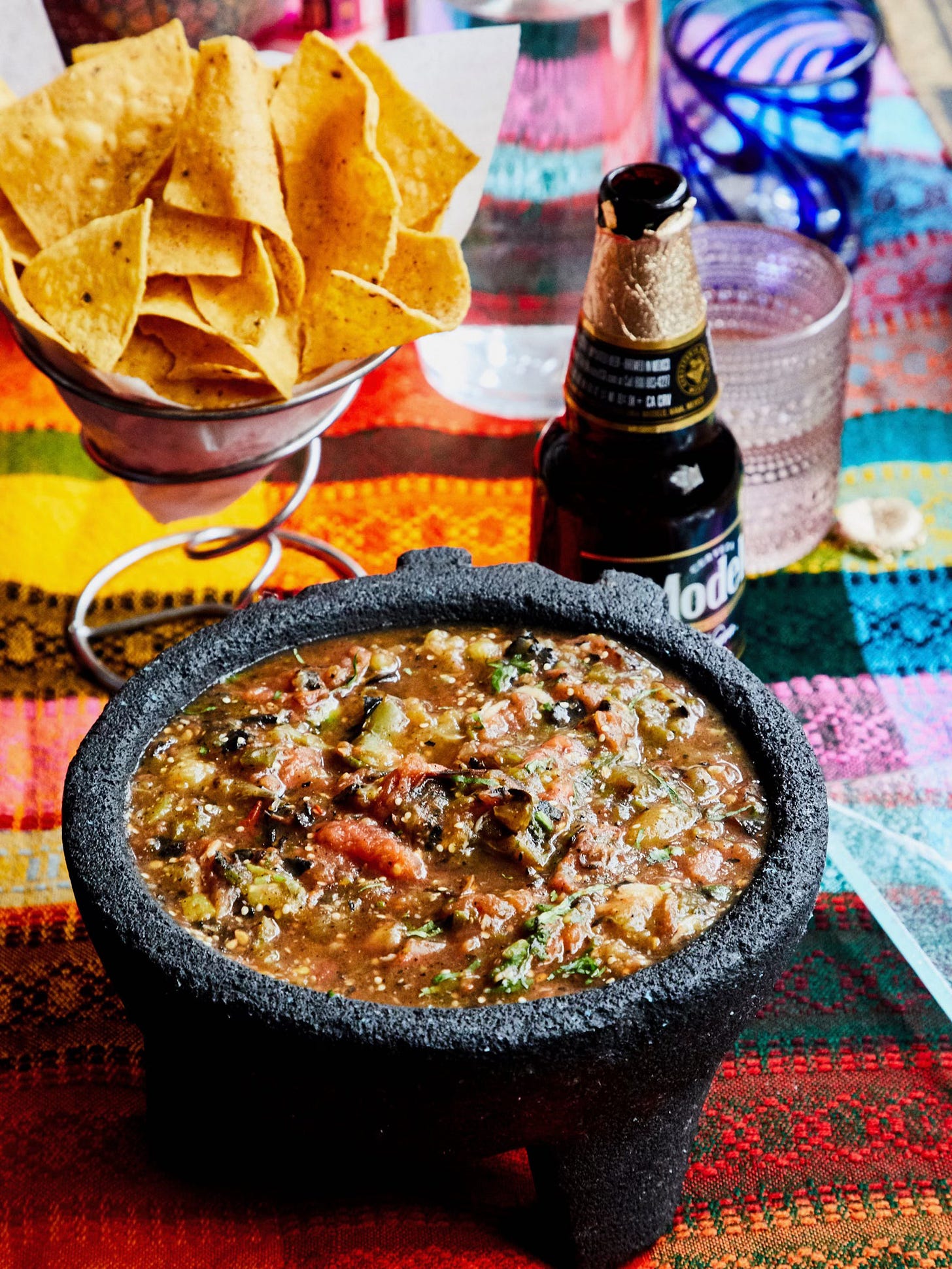Friends, can you believe it’s already the middle of August? The summer always seems to fly by, and I hope you are soaking in every last bit of it. But it’s not over yet! Over here at Longer Tables, you may have noticed many of our recent recipes have focused on helping you do just that—assembling delicious, light meals with the season’s freshest ingredients, instead of spending all your time over a stove!
This time of year, there’s also a lot of produce—if you have a home garden, or if someone you know is giving away a lot of vegetables from your home garden, you might be wondering what to do with all of it. So today I think it’s the perfect time to talk about the salsas of Mexico, because once you have mastered a few of them, you can add so much more to your cooking routines, without having to buy a lot of new equipment or even a ton of hard-to-find ingredients. Regardless of where in Mexico they come from, they’re a special way to add a ton of flavor to an amazing piece of meat or fish, or eggs—there’s even a sandwich from the Jalisco region, torta ahogada, which is served drowning in a simple tomato sauce and topped with an arból chile salsa!
Before I talk about the salsas themselves, I think it’s important to talk a little bit about the different regions of Mexico. While there are 31 individual states in Mexico, there are seven major geographical regions that each have their own distinct styles of cooking, signature dishes, and ingredients influenced by indigenous history and what is farmed, raised, or fished there. And I have learned so much about these regions and their foods through my friends Pati Jinich, Gabriela Cámara, and Diana Kennedy, who are all amazing Mexican chefs!
In the Distrito Federal (Mexico City) and Puebla, where people get just as excited about street food as they do about Michelin-starred restaurants, you can find lots of salsas and dishes featuring Poblano peppers (and don’t forget about the simple and amazing pineapple salsa that belongs on top of tacos al pastor!). In places like Baja or Veracruz, with so many different cultural influences, you will see salsas with tropical fruits, or even with olives, capers, or peanuts. The people of the Yucután peninsula love habañero peppers, so their salsas are fiery hot with lots of acid from the local bitter oranges. A salsa in Oaxaca might include chapulines—and if you’re saying, “hey, José, I don’t know what those are!” I can simply say they are grasshoppers, they are delicious, and they are also a great source of protein! The north of Mexico (Norteño) is a ranching region bordering on a lot of the U.S., so the salsa that we know as “salsa ranchera” with tomatoes and onions made its way up to us.
No matter how different all the salsas in Mexico can be, one thing that a good salsa has is balance—you want all the ingredients to play nicely together, without one being the only star. There are a couple of different components that make a perfectly balanced salsa, even if the ingredients change from region to region. You won’t always use tomatoes or tomatillos like you do in salsa roja or salsa verde, but you will almost always use chiles, whether they’re fresh, like habañero, jalapeño, or serrano, or dried—like ancho, guajillo, or pasilla. You will also usually use an acid, such as a citrus juice or vinegar, and probably something aromatic like onion or garlic (something to note too…white onion is used almost everywhere in Mexico because it doesn’t overpower the other ingredients). Of course you will want to season it with salt to bring out all the different flavors. And while some salsas are raw or fresh, others might depend on charred or roasted vegetables to add a deep, smoky flavor.
Of course we have so many house made salsas at Oyamel, our love letter to Mexico CIty—but there we are inspired by all the different regions of Mexico. Head Chef Claudio Foschi actually just added a selection of 4 salsas to the menu…2 salsa verdes and 2 salsas rojas, ranging from fresh to cooked and mild to very spicy!
The two salsas you will probably see the most of, whether here or in Mexico, are salsa verde and salsa roja. Salsa verde uses tomatillos, which contribute to a tangy acidity even before you add citrus, and usually a serrano or jalapeño pepper, onion, cilantro and lime juice. Salsa roja usually will call for roasting your vegetables until they’re charred (bonus points if you can do it over an open flame!). And as they say in Mexico, if you can’t decide between verde and roja, you can get divorciados…which means you get both! For breakfast, it’s very common to see huevos or chilaquiles divorciados on the menu.
Of course there is pico de gallo, the fresh tomato salsa that we see a lot of in the U.S. But two amazing and fun salsas which you might NOT have heard of are salsa borracha and Xnipec. Borracha translates to “drunk,” and there are many variations of this salsa that include tequila or mezcal, but it is also ok to use beer. And perhaps the most fun salsa, because it wakes you up and challenges your senses, is Xnipec—which translates to “dog’s nose,” probably because your nose will be running from all the heat from those tricky habañeros! Xnipec is one of the salsas from the Yucutan that has tomatoes, onions, cilantro, and bitter or sour orange—and you can adjust the level of heat by removing the ribs and seeds from the habañeros (just be careful and maybe use gloves to not transfer the pepper juices to your hands or eyes!). Salsa macha originated in Veracruz, which is on the Gulf coast of Mexico. My friend and colleague, Chef Hector Contreras, is from Mexico and makes salsa macha as a staple: “it’s a chile oil-based salsa that has a nice balance of smoky chile moritas, sesame seeds and peanuts. I’m obsessed with it! Salsa is a necessity in my life. I always have one or two containers of salsa in the fridge to use at a moment’s notice for everything from eggs in the morning to a late night snack. Its versatility can enhance so many different things.”
When you’re making salsa at home, it’s important to remember that you don’t need a lot of fancy equipment—you can start with a good knife and a cutting board. A blender can be very helpful to get a fine, smooth texture. If you invest in a molcajete (I love the one from Masienda), you won’t be disappointed…they’re used a lot in salsa preparations as well as guacamole. And finally, you can char your salsa ingredients over an open flame, but it’s also perfectly ok to use a pan or a baking sheet—many Mexican cooks use comals, or flat, round pans meant to be used over a flame or a stove. The most important part about making salsa at home is to make it yours, and to add your own personal touch to it!
What is the most surprising Mexican salsa that you’ve tasted?






Amazing! I’m hungry for that salsa now! 💥
Are there recipes to go with this column? I would love to make some of the ones you deliciously described. Thanks!